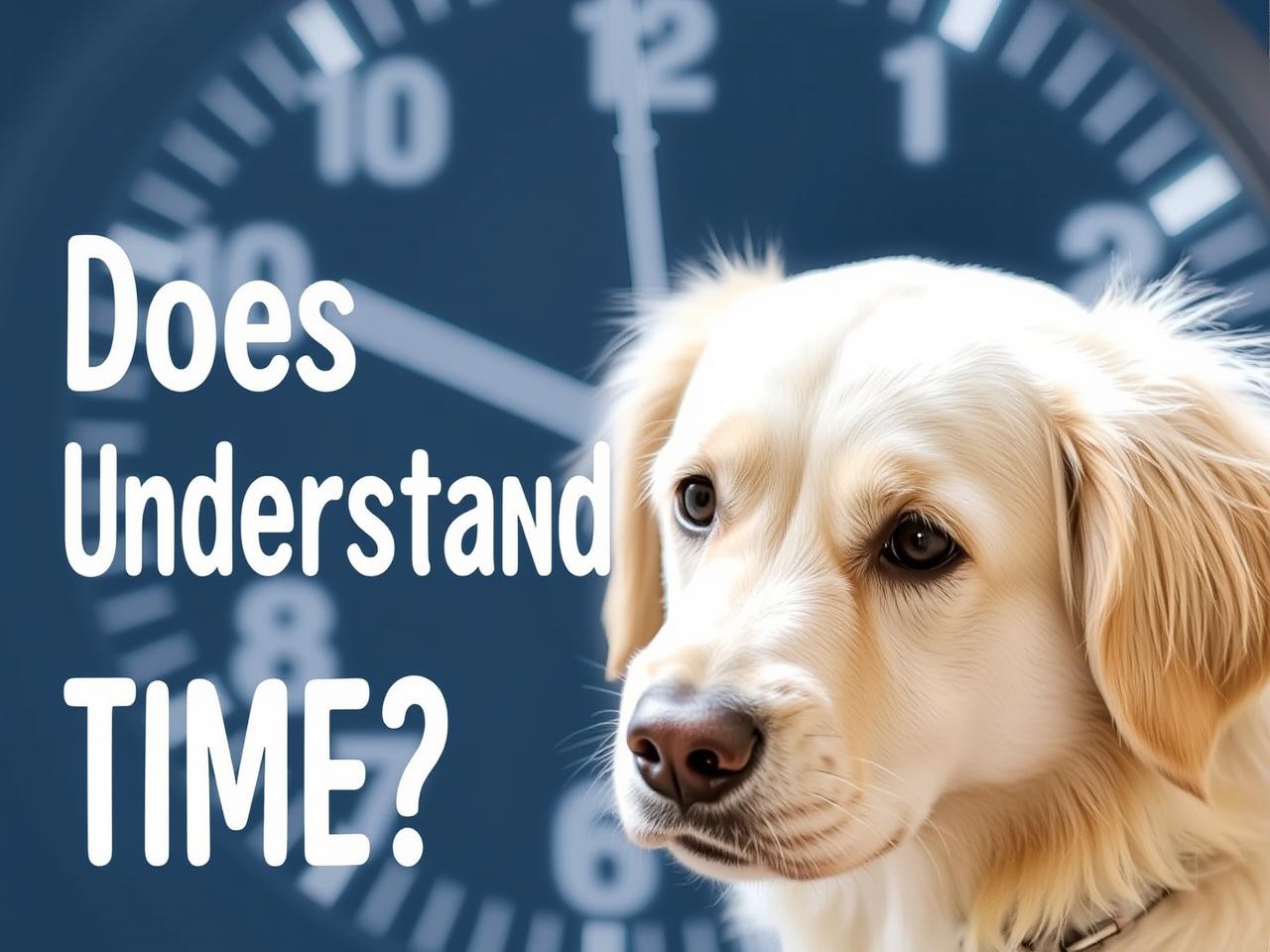Does Your Dog Understand Time? A Look at How Pets Perceive Daily Routines
Time perception in animals, particularly dogs, is a complex and intriguing area of study. Unlike humans, who rely on clocks and calendars to measure time, dogs perceive time through their innate instincts and established daily routines. This difference in time perception between humans and dogs has significant implications for understanding canine behavior and developing appropriate care strategies.
Dogs exhibit a strong sense of time that is closely linked to their daily activities and routines. They are highly adaptable creatures that thrive in environments with consistent and predictable patterns. By studying their behavioral responses to various time-related stimuli, researchers can gain valuable insights into how dogs experience the passage of time and how it affects their daily lives.
This exploration of canine time perception encompasses several key areas, including:
1. How dogs experience daily routines
2. The importance of routine in a dog’s life
3. Time-related behaviors exhibited by dogs
4. The impact of human behavior on a dog’s time perception
5. Potential breed-specific differences in time perception
6. Practical implications for pet owners
Understanding these aspects of canine time perception can help pet owners and researchers alike to better comprehend and address the needs of dogs in various contexts.
Key Takeaways
- Dogs perceive time differently than humans, and understanding their time perception can improve their care and training.
- Canine daily routines play a significant role in a dog’s life, impacting their behavior and well-being.
- Dogs exhibit time-related behaviors, such as anticipating events based on time cues, showing their awareness of time.
- Human behavior and routines can influence a dog’s understanding of time, shaping their perception and behavior.
- Different dog breeds may have varying abilities to understand time, which can impact their response to routines and training.
Canine daily routines: How dogs experience and respond to daily activities

Dogs’ Internal Clock
For example, a dog may start to get excited and exhibit certain behaviors, such as wagging its tail or pacing, when it senses that it’s close to its regular walk time. This demonstrates that dogs have a keen awareness of their daily schedule and are able to anticipate events based on time-related cues.
Social Interactions and Time
In addition to physical activities, dogs also experience time through social interactions with their human companions and other pets. For instance, they may learn to associate certain times of the day with specific activities, such as meal times or playtime with their favorite toys.
Respecting Routines for a Happy Dog
This ability to anticipate events based on time cues is a testament to dogs’ cognitive abilities and their capacity to understand and adapt to their daily routines. By recognizing and respecting their routines, pet owners can help create a sense of security and stability for their dogs, which can have a positive impact on their overall well-being.
The role of routine in a dog’s life: Understanding the impact of consistent schedules on a pet’s behavior

Routine plays a crucial role in a dog’s life, providing them with a sense of security, stability, and predictability. Dogs thrive on consistency and structure, and having a regular routine can help reduce stress and anxiety in pets. When dogs know what to expect at certain times of the day, they feel more secure and are better able to relax and enjoy their daily activities.
This is particularly important for dogs that may have experienced trauma or have behavioral issues, as a consistent routine can help them feel safe and build trust with their owners. Consistent schedules also play a significant role in shaping a dog’s behavior and training. By establishing regular meal times, potty breaks, exercise, and playtime, pet owners can help reinforce positive behaviors and discourage unwanted ones.
Dogs are quick learners and will often pick up on patterns and routines, so it’s important for pet owners to be consistent with their schedules and expectations. This can help create a harmonious environment for both the pet and the owner, fostering a strong bond built on trust and understanding.
Time-related behaviors: Observing how dogs anticipate events and activities based on time cues
Dogs exhibit a range of time-related behaviors that demonstrate their ability to anticipate events and activities based on time cues. For example, many dogs will start to exhibit excitement or anticipation as they sense that it’s close to their regular meal times or walks. They may become more alert, start pacing, or even vocalize their excitement as they anticipate the upcoming activity.
This behavior showcases their ability to perceive time and anticipate events based on their daily routines. In addition to physical activities, dogs also demonstrate time-related behaviors in response to human actions and routines. For instance, they may learn to associate certain actions or behaviors from their owners with specific times of the day.
This could include getting ready for work in the morning, preparing dinner in the evening, or settling down for bedtime. Dogs are highly attuned to human behavior and can pick up on subtle cues that signal changes in their environment or routine. This ability to understand human actions in relation to time further highlights their cognitive abilities and adaptability.
The influence of human behavior: Examining how dogs may learn to understand time through human actions and routines
Dogs are highly observant animals that pay close attention to human behavior and routines. They can pick up on subtle cues from their owners, such as changes in body language, vocal cues, or daily habits, which can help them understand and anticipate events based on time-related cues. For example, a dog may learn that when its owner puts on their running shoes in the evening, it’s time for their regular evening walk.
This ability to understand human behavior in relation to time allows dogs to adapt to changes in their environment and anticipate upcoming activities. Furthermore, dogs may also learn to associate specific actions or behaviors from their owners with certain times of the day. For instance, they may learn that when their owner starts preparing dinner in the kitchen, it’s close to their regular mealtime.
This association between human actions and time cues demonstrates dogs’ ability to understand and adapt to changes in their environment based on human behavior. By being mindful of their own actions and routines, pet owners can help reinforce positive behaviors and create a sense of predictability for their dogs.
Time perception in different breeds: Investigating whether certain breeds have a better understanding of time than others

Breed Variations in Time Perception
While all dogs have a keen sense of time based on their daily routines and activities, there may be variations in how different breeds perceive time. Some breeds may be more attuned to time-related cues or have a better understanding of human behavior in relation to time than others.
Intelligent Breeds and Time Awareness
For example, working breeds such as Border Collies or German Shepherds are known for their high intelligence and ability to learn complex tasks quickly. These breeds may have a heightened awareness of time-related cues and be more adept at anticipating events based on their daily routines.
Breeds with a Strong Sense of Timing
On the other hand, breeds that were originally bred for hunting or tracking may have a strong sense of timing when it comes to activities such as meal times or outdoor adventures. Breeds such as Beagles or Bloodhounds have a keen sense of smell and are highly motivated by food, which may influence how they perceive time in relation to meal times or snack breaks.
Individual Differences Matter
While these are generalizations based on breed characteristics, individual differences within each breed should also be taken into account when considering how dogs perceive time.
Implications for pet owners: How understanding a dog’s perception of time can improve training and care routines
Understanding a dog’s perception of time can have significant implications for pet owners when it comes to training and care routines. By recognizing the importance of routine in a dog’s life and being mindful of their ability to perceive time-related cues, pet owners can create better care routines that cater to their pet’s needs. This includes establishing consistent schedules for meals, potty breaks, exercise, playtime, and bedtime, which can help reduce stress and anxiety in pets.
Furthermore, understanding how dogs perceive time can also improve training methods by taking into account their ability to anticipate events based on time-related cues. By being consistent with training sessions and incorporating them into their daily routines, pet owners can help reinforce positive behaviors and create a sense of predictability for their dogs. This can lead to better communication between the pet and the owner, fostering a strong bond built on trust and understanding.
In conclusion, exploring the concept of time perception in dogs provides valuable insights into their behavior and cognitive abilities. Dogs experience time through their daily routines and activities, demonstrating an ability to anticipate events based on time-related cues. Understanding the role of routine in a dog’s life can help create a sense of security and stability for pets while shaping their behavior and training.
The influence of human behavior also plays a significant role in how dogs perceive time, as they learn to understand and adapt to changes in their environment based on human actions. While there may be variations in how different breeds perceive time, recognizing a dog’s perception of time can have significant implications for pet owners when it comes to improving training and care routines for their furry companions.
FAQs
What is the concept of time perception in dogs?
Dogs perceive time differently than humans. They rely on routines, cues, and their internal body clock to understand the passage of time.
Do dogs have a sense of time?
Yes, dogs have a sense of time, but it is not as precise as humans. They can anticipate regular events and routines based on their internal body clock and environmental cues.
How do dogs perceive daily routines?
Dogs perceive daily routines through their keen sense of smell, their ability to recognize patterns, and their association of certain activities with specific times of the day.
Can dogs tell time like humans?
Dogs cannot tell time in the same way humans do by reading a clock, but they can sense the passage of time through their instincts and by observing regular patterns in their environment.
Do dogs experience time-related anxiety when left alone?
Some dogs may experience separation anxiety when left alone for extended periods, but this is more related to their attachment to their owners rather than a specific understanding of time.







